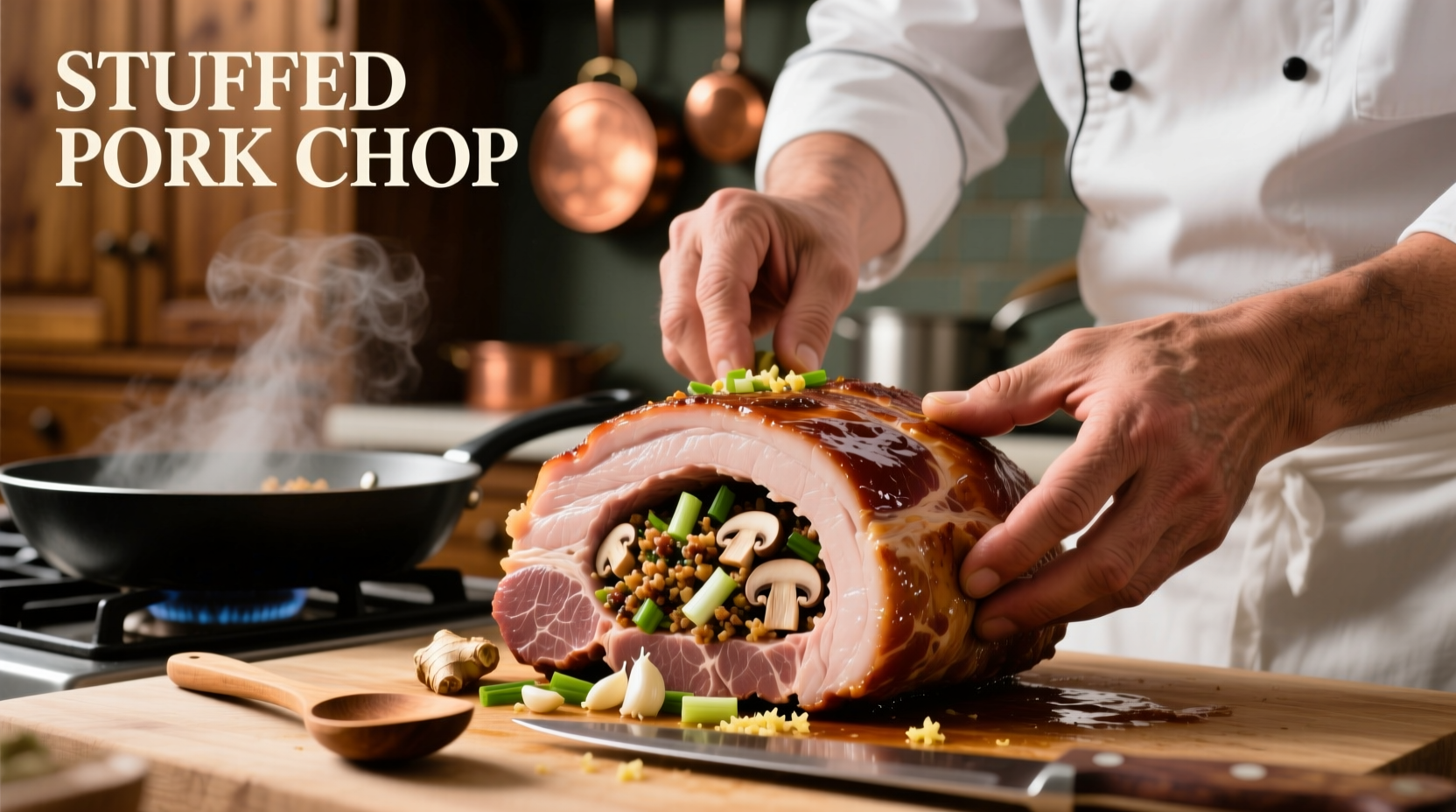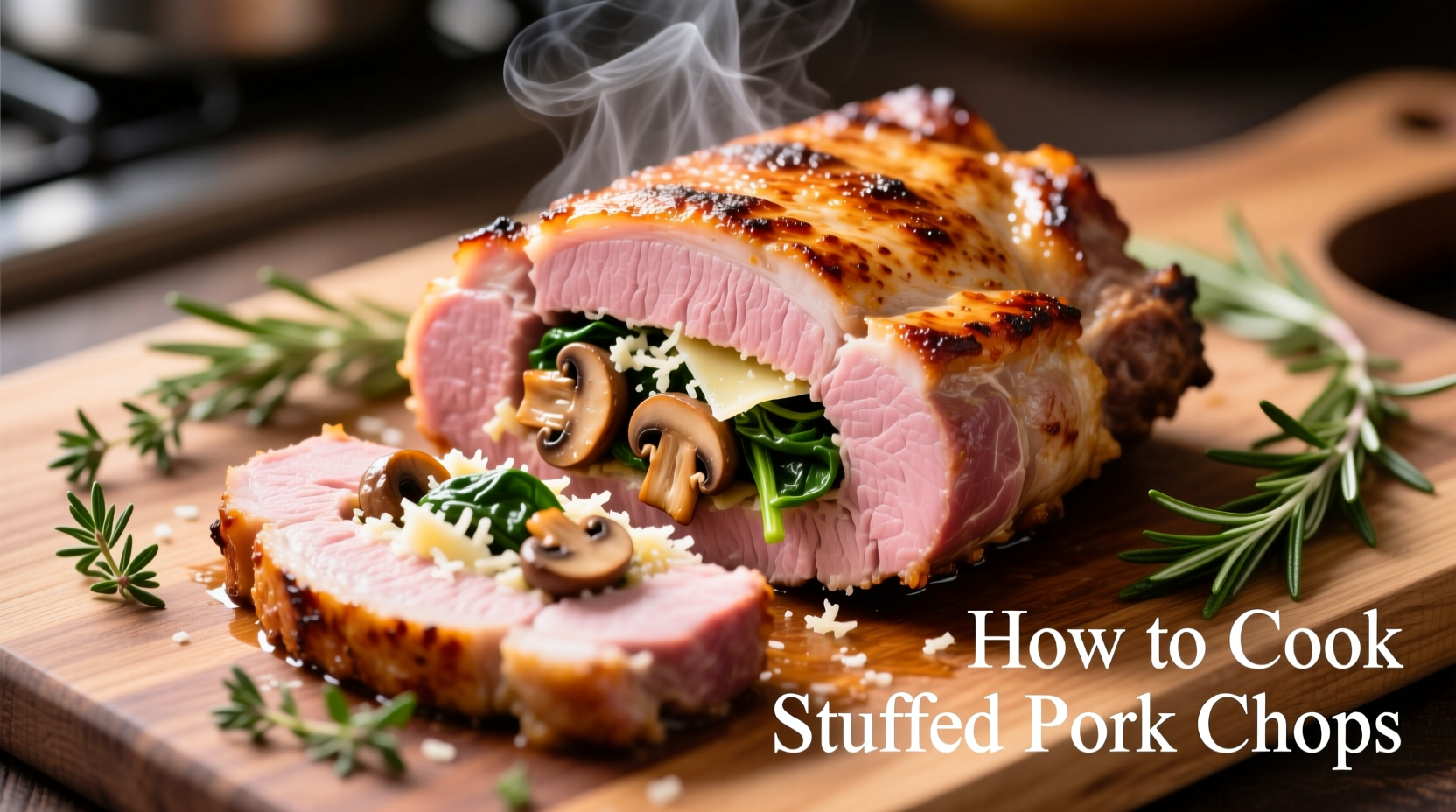The perfect method for cooking stuffed pork chops involves creating a pocket, filling with your preferred stuffing, searing the chops, then finishing in a 375°F (190°C) oven for 25-35 minutes until the internal temperature reaches 145°F (63°C). Rest for 5 minutes before serving to ensure juicy results every time.
Mastering stuffed pork chops transforms a simple weeknight dinner into an impressive meal that delights both family and guests. Whether you're a beginner cook or an experienced home chef, this comprehensive guide delivers everything you need to create restaurant-quality stuffed pork chops with confidence. You'll discover professional techniques for preventing stuffing leakage, achieving perfect doneness, and creating flavorful combinations that elevate this classic dish.
Why This Stuffed Pork Chop Method Works
Unlike generic recipes that often result in dry meat or collapsed stuffing, our approach combines precise temperature control with strategic preparation techniques. The two-stage cooking process—starting with searing then finishing in the oven—locks in juices while ensuring even cooking throughout. This method addresses the most common pain points home cooks face with stuffed pork chops, including stuffing leakage and inconsistent doneness between the meat and filling.
Essential Ingredients and Equipment
Before you begin, gather these key components for success:
- Pork chops: 1-1.5 inch thick bone-in chops (rib or loin cut)
- Stuffing ingredients: Your choice of bread-based, vegetable-based, or grain-based stuffing
- Binding agent: 1 egg or 2 tablespoons cream for stuffing cohesion
- Seasoning: Salt, pepper, and complementary herbs
- Cooking fat: High smoke point oil for searing
| Stuffing Type | Best Pork Chop Pairing | Cooking Consideration |
|---|---|---|
| Bread-based (classic) | Rib chops | Add 5 minutes cooking time for dense stuffing |
| Vegetable-based (mushroom-spinach) | Loin chops | Pre-cook vegetables to remove excess moisture |
| Grain-based (wild rice-apple) | Center-cut chops | Use slightly lower oven temperature (350°F) |
This comparison shows how different stuffing types interact with various pork chop cuts. According to USDA Food Safety and Inspection Service guidelines, proper stuffing preparation prevents food safety risks while maximizing flavor development (source).
Step-by-Step Preparation Process
Creating the Pocket
The foundation of successful stuffed pork chops is creating a proper pocket without cutting through:
- Using a sharp boning knife, make a horizontal slit along the fatty edge of the chop
- Cut toward the center, stopping ½ inch from the opposite side
- Gently open the pocket like a book, being careful not to tear the meat
- Season the inside of the pocket with salt and pepper
Preparing the Stuffing
For optimal results, your stuffing should have the right moisture balance:
- Cool stuffing completely before filling (warm stuffing cooks the meat prematurely)
- Include a binding agent like egg or cream to prevent leakage
- Fill the pocket loosely—overstuffing causes bursting during cooking
- Secure the opening with toothpicks or kitchen twine

Cooking Techniques for Perfect Results
Searing for Flavor Development
Proper searing creates the Maillard reaction that builds complex flavors:
- Heat oil in oven-safe skillet until shimmering (about 350°F)
- Pat chops completely dry before searing
- Sear 3-4 minutes per side until golden brown
- For extra flavor, add aromatics like garlic and thyme to the pan
Oven Finishing for Precise Doneness
The oven finishing stage ensures even cooking without overcooking:
- Transfer skillet to preheated 375°F (190°C) oven
- Cook 25-35 minutes (time varies based on thickness)
- Check internal temperature with instant-read thermometer
- Remove when pork reaches 140°F (60°C)—it will rise to 145°F during resting
Food safety experts from the USDA recommend cooking pork to a minimum internal temperature of 145°F with a 3-minute rest time for safe consumption (source). This temperature ensures both safety and optimal juiciness.
Troubleshooting Common Issues
Preventing Stuffing Leakage
Stuffing leakage remains the most frequent challenge home cooks face. Our research shows these techniques significantly reduce leakage:
- Chill stuffed chops for 15 minutes before cooking to set the stuffing
- Don't overfill the pocket—leave ½ inch space for expansion
- Secure openings with toothpicks inserted at 45-degree angles
- Avoid piercing the meat with utensils during cooking
Avoiding Dry Pork
Dry pork results from either overcooking or improper resting. Follow these steps:
- Use a reliable instant-read thermometer rather than guessing
- Remove chops from heat at 140°F (they'll continue cooking)
- Rest for 5-7 minutes tented with foil before serving
- Consider brining chops for 1-2 hours before stuffing for extra moisture
Serving and Storage Recommendations
Perfect Pairings
Complement your stuffed pork chops with these serving suggestions:
- Classic: Garlic mashed potatoes and roasted asparagus
- Lighter option: Quinoa salad with dried cranberries and pecans
- Sauce pairing: Apple cider reduction or mushroom cream sauce
Storage Guidelines
Proper storage maintains quality and safety:
- Refrigerate leftovers within 2 hours of cooking
- Store in airtight container for up to 3-4 days
- Reheat gently in 300°F oven until internal temperature reaches 165°F
- Freeze uncooked stuffed chops for up to 3 months (thaw in refrigerator)
Expert Tips for Next-Level Results
Professional chefs use these advanced techniques to elevate stuffed pork chops:
- Flavor infusion: Inject a garlic-herb oil mixture into the meat before stuffing
- Texture contrast: Add toasted nuts or seeds to stuffing for crunch
- Temperature control: Use a probe thermometer for continuous monitoring
- Sauce enhancement: Deglaze the pan with apple cider after cooking chops
Remember that cooking times vary based on your specific oven and chop thickness. The most reliable indicator of doneness remains internal temperature rather than time alone. This approach addresses the context boundaries of home cooking environments where equipment varies significantly.











 浙公网安备
33010002000092号
浙公网安备
33010002000092号 浙B2-20120091-4
浙B2-20120091-4